
The Cathedral of the Holy Trinity is the cathedral for the Church of England Diocese of Gibraltar in Europe. Located in Cathedral Square, it is sometimes referred to simply as Gibraltar Cathedral, although it should not be confused with the Cathedral of St. Mary the Crowned, which is Gibraltar's Roman Catholic cathedral. The cathedral is particularly notable for its Moorish revival architecture, particularly in its use of horseshoe arches. This is an architectural style inspired by Moorish architecture, appropriate given the period of Moorish control in Gibraltar's history.

Charles Beaumont Howard was a colonial clergyman in South Australia.

Adelaide city centre is the inner city locality of Greater Adelaide, the capital city of South Australia. It is known by locals simply as "the City" or "Town" to distinguish it from Greater Adelaide and from the City of Adelaide local government area. The population was 15,115 in the 2016 census.
The Province of South Australia was established by an Act of the British Parliament and was assented to by King William IV on 15 August 1834. Freemasonry became included in the plans for the proposed new settlement with the establishment of a new Lodge in England. On 22 October 1834, the South Australian Lodge of Friendship, No 613 E.C. was warranted and met in London for the first time on 27 November.

Sir James Hurtle Fisher was a lawyer and prominent South Australian pioneer. He was the first Resident Commissioner of the colony of South Australia, the first Mayor of Adelaide and the first resident South Australian to be knighted.

Sir John Morphett was a South Australian pioneer, landowner and politician. His younger brother George Morphett was also an early settler in South Australia.

Dr Charles George Everard MD was a physician, pioneer farmer and Member of the Legislative Council, in the early days of South Australia.

John Barton Hack was an early settler in South Australia; a prominent farmer, businessman and public figure. He lost his fortune in the financial crisis of 1840 and despite his best efforts, never regained anything like his former influence and prosperity. His son Theodore Hack, younger brother Stephen Hack and nephew Wilton Hack were all figures of some significance in the history of the Colony.

Grenfell Street is a major street in the north-east quarter of the Adelaide city centre, South Australia. The street runs west-east from King William Street to East Terrace. On the other side of King William Street, it continues as Currie Street. Its intersection with Pulteney Street is encircled by Hindmarsh Square.
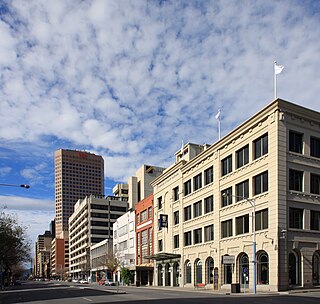
Currie Street is a main street in the Adelaide city centre, South Australia. It runs east–to–west from King William Street, through Light Square, to West Terrace on the western edge of the city centre.

The Adelaide meeting house of the Religious Society of Friends ("Quakers") is situated on Pennington Terrace, North Adelaide, South Australia, literally in the shadow of St Peter's Cathedral, on its west side. It is substantially made of timber, the only such church building in the City. Besides Sunday meetings, weddings and the like, it has also hosted secular meetings, particularly for peace, education, temperance and other social causes. It also served briefly for Adelaide's Presbyterian congregation prior to construction of the Church of Scotland building on Grenfell Street, also for the North Adelaide congregation of the Church of England.
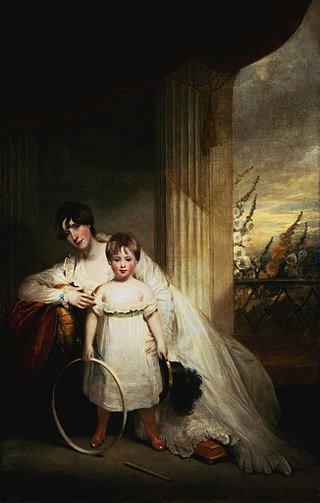
Pascoe St Leger Grenfell was a British businessman and patron, and a key backer of the South Australian Company. He was a committee member of the South Australian Church Society, and is known for donation of an acre of land on North Terrace, Adelaide which was used for the construction of the Holy Trinity Church — one of the first churches built in the city and the colony. He also donated 40 acres of land for the use of the church as glebe lands. This land later became the suburb of Trinity Gardens. Grenfell Street, Adelaide was named after him.

The Garrison Church is a heritage-listed active Anglican church building located at Argyle Street in the inner city Sydney suburb of Millers Point in the City of Sydney local government area of New South Wales, Australia. It was designed by Henry Ginn, Edmund Blacket and built from 1840 to 1846 by Edward Flood and George Patton. It is also known as Holy Trinity Anglican Church and Hall. The property is owned by Anglican Church Property Trust and was added to the New South Wales State Heritage Register on 2 April 1999.
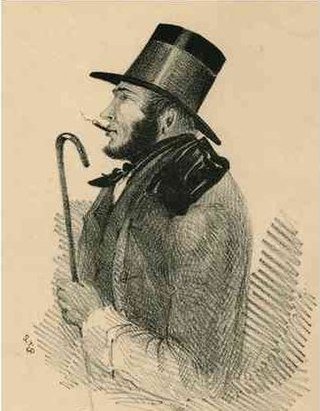
George Morphett was a settler in the colony of South Australia, and younger brother of John Morphett.
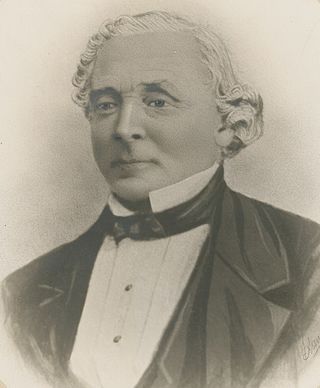
John Finlay Duff was a ship's captain and businessman in the Colony of South Australia.
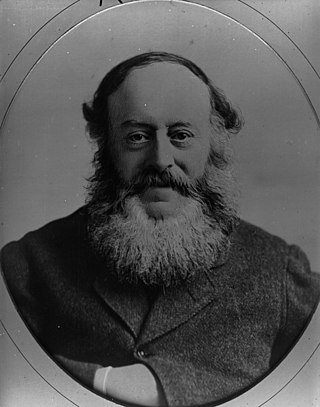
Robert George Thomas was a draftsman and architect in the British colony of South Australia. He copied Surveyor-General Colonel William Light's original plan for the City of Adelaide and was later responsible for the design and execution of some of its significant buildings, including several churches in a Gothic style.
The South Australian Church Society was a British based organisation concerned with the establishment of churches in the new colony of South Australia. The committee included William Wolryche-Whitmore, Raikes Currie, Pascoe St Leger Grenfell, John Morphett, John Shaw Lefevre, John Rundle and others — and had very strong connections and overlap with the Directors and Commissioners of the South Australia Company. Their key success was the formation and construction of the Trinity Church on the corner of North Terrace and Morphett Street. The Honorary Secretary was Charles Mann and Raikes Currie as Treasurer.
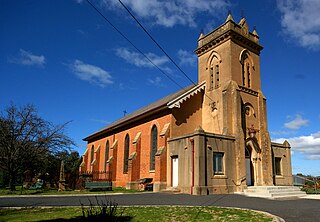
Holy Trinity Anglican Church is a heritage-listed Anglican church precinct, containing the church, rectory and adjacent cemetery, at 71-85 Gilmour Street, Kelso, Bathurst Region, New South Wales, Australia. The church was built from 1833 to 1878, with John Foster being responsible for the building of the original church. Edmund Blacket designed the rectory. The property is owned by Anglican Property Trust Diocese of Bathurst and Parish of Kelso, Anglican Diocese of Bathurst. It was added to the New South Wales State Heritage Register on 14 January 2011.





















